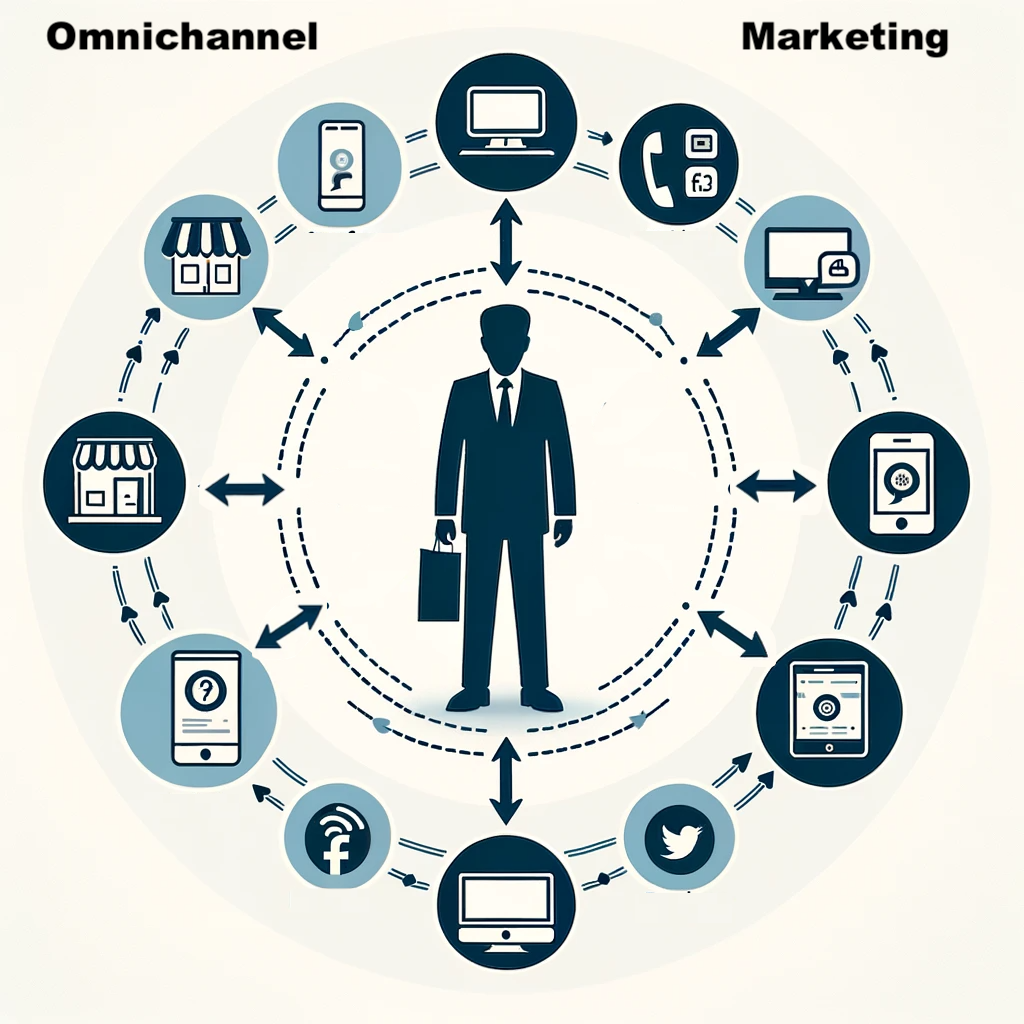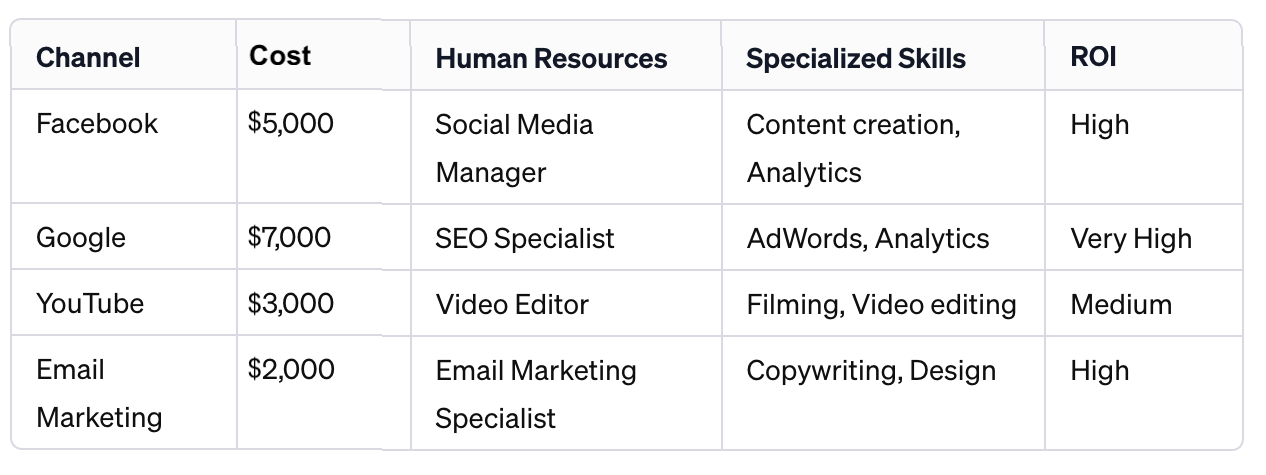Businesses must constantly seek ways to scale and reach a wider audience. In this pursuit, the most common question is: “Which marketing channel should I focus on for exponential growth?” While some swear by YouTube ads, others find success in podcasting or influencer marketing.
But the secret to scaling your business lies in an omnichannel marketing strategy.
In this post, we break down the advantages to an omnichannel marketing strategy as well as provide some tips on how to introduce the model into your current marketing activities.
We can count on them to bring new ideas to the table consistently
The Single-Channel Approach
Many businesses, especially coaching and mentorship programs, often start by focusing on a single channel. For instance, if you’re running a coaching business that generates around $8-10 million dollars a year, you might be tempted to attribute this success solely to YouTube ads.
But here’s the catch: Relying on a single channel is like putting all your eggs in one basket. What happens if that channel experiences issues, like Facebook Ads getting shut down or Google’s ever-changing algorithms affecting your reach?
The answer to scaling goes beyond a single channel reach: For success you must adopt an omnichannel approach.
This doesn’t mean you should abandon your primary channel; rather, it’s about diversifying your marketing efforts. Think of it as a well-rounded diet for your business. You wouldn’t rely solely on carbohydrates for sustenance, would you? Similarly, your business needs a mix of marketing channels to truly thrive.
So What Is Omnichannel Marketing?
Omnichannel marketing is a strategy that provides a seamless and integrated customer experience across multiple channels, such as online, in-store and mobile.

This strategy aims to create a cohesive brand message and customer interaction regardless of how or where a customer chooses to engage with the company.
Multiple channels are used to reach your audience, including:
- Physical retail stores
- Online websites and e-commerce platforms
- Mobile applications
- Social media channels (YouTube, Facebook, X, TikTok, LinkedIn, etc.)
- Email campaigns
- Telephone support and telesales
- Live chat services
- Customer service portals
- Direct mail and catalogs
- Interactive kiosks and digital signage
- Paid ads, such as:
-
- Google Ads (Search and Display)
- Social Media Ads
- Microsoft Ads
- Podcast Ads
- Programmatic Advertising
- Native Advertising
- Affiliate Marketing
There are an innumerable pool of options to choose from, some of which make more or less sense to use depending on your vertical.
The idea is to leverage all available channels to create a cohesive and seamless customer experience. Some channels will drive significant traffic, while others may contribute less, but every bit counts. It’s a numbers game, and the more channels you tap into, the higher your chances of scaling your business.
Why Is the Omnichannel Approach so Effective?
The omnichannel approach to marketing is effective for many reasons, such as:
- Risk Mitigation: By diversifying your marketing channels, you’re essentially creating a safety net for your business. If one channel experiences a downturn or faces issues, the others can compensate, ensuring a steady flow of leads and revenue.
- Wider Reach: Different channels attract different demographics. For instance, while TikTok may be a hit among Gen Z, Facebook often appeals to an older demographic. An omnichannel approach ensures that you’re casting a wide net, capturing a diverse customer base.
- Consistent Messaging: One of the most underrated benefits of an omnichannel strategy is the ability to maintain consistent branding and messaging across all platforms. This not only enhances brand recall but also builds trust, as customers are more likely to engage with a brand they recognize and understand.
- Data Integration: By integrating data from various channels, businesses can gain a better understanding of customer behavior and preferences. And seamless data integration helps to put the customer at the center of the strategy so that they receive a consistent and personalized experience across all channels.
- Enhanced Accessibility: Customers can interact with the brand through their preferred channels at their convenience, increasing the chances of conversion and retention. And with multiple touchpoints, businesses can engage customers more effectively.
How to Implement an Omnichannel Marketing Strategy
Laying the groundwork of an omnichannel marketing strategy is crucial for success, but you should anticipate that not every channel you try out will yield the same types of results. That’s sort of the whole point of an omnichannel approach.
At first, it’s all about locating which channels are going to drive the most qualified, intentional traffic. The other reason is to maintain presence on multiple platforms, creating a seamless and unified customer experience across all touchpoints.
Here are four basic steps to create an omnichannel strategy.
Step 1: Identify Your Channels
The first step in implementing an omnichannel marketing strategy is to identify the channels that are most relevant to your business. This is crucial because each channel has its unique strengths and weaknesses, and knowing where to focus your efforts can make all the difference.
Start by creating a comprehensive list of all possible channels, both digital and traditional. This could include:
- Social Media Platforms: Facebook, Instagram, Twitter, and LinkedIn
- Search Engines: Google, Bing, Yahoo
- Video Platforms: YouTube and TikTok
- Podcasts
- Email Marketing
- Affiliate Programs
- Influencer Partnerships
- Traditional Media: TV, Radio, Print Ads
Don’t limit yourself to the most popular or trendy channels. Sometimes, traditional channels like TV and radio ads can offer untapped potential, especially for specific target demographics.
Step 2: Allocate Resources
Once you’ve identified your channels, the next step is to allocate your resources effectively. This involves determining how much time, effort and money you can invest in each channel.
Create a budget that outlines the financial investment needed for each channel. This will help you prioritize channels that offer the best ROI:

Don’t forget to consider the human resources required. Some channels may need specialized skills, like video editing for YouTube or copywriting for blogs.
Step 3: Create Cohesive Content
Consistency is key in any marketing strategy, but it’s especially crucial in an omnichannel approach. Your messaging should be cohesive across all platforms to create a seamless customer experience.
Make sure that the language, visuals and calls to action are harmonized across all channels. For example, if you’re running a promotion, the messaging should be the same whether a customer sees it on Facebook, receives an email or hears about it on a podcast.
Build and follow a content calendar to plan and coordinate your messaging across different platforms, ensuring that each channel complements the others.
Step 4: Monitor and Tweak
The final step in your omnichannel strategy is ongoing monitoring and tweaking. Use analytics tools to track performance metrics like engagement, conversion rates and ROI for each channel.
Use the data to identify what’s working and what needs adjustment. Maybe your Instagram posts are generating a lot of engagement, but your email campaigns are falling flat. This insight allows you to reallocate resources effectively.
Remember, an omnichannel strategy is not a “set it and forget it” operation. It’s an iterative process that requires regular monitoring and adjustments to adapt to changing trends and customer behaviors.
Last Thoughts: Scaling Is a Numbers Game
In the end, scaling your business isn’t about finding that one magical channel. It’s about playing the numbers game wisely. If you’re ready to take your business to the next level, an omnichannel marketing strategy is your ticket to success.
So go ahead, diversify your marketing channels and watch your business soar!
If you’re ready to optimize customer interactions across all platforms to scale your business, Single Grain’s omnichannel marketing experts can help!👇
For more insights and lessons about marketing, check out our Marketing School podcast on YouTube.


